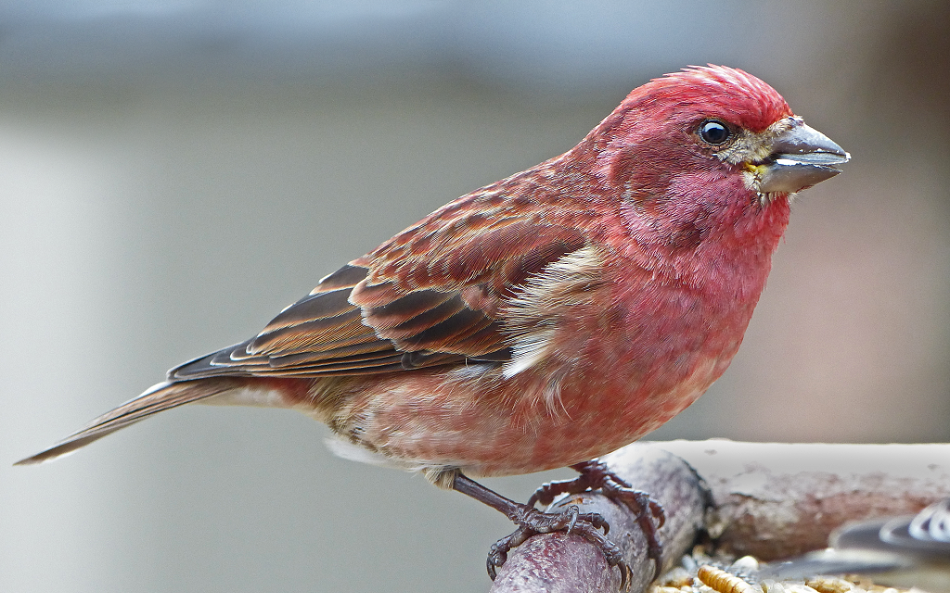Table Of Content

While male Purple finches have red/scarlet breasts, the females have streaky brown plumage. Male House finches are streaky on their chest and breast, but the females are much less streaky. First and foremost, the male Purple finch's red/scarlet plumage is more strongly pigmented and wraps all the way around the breast, head and back. Contrastingly, House finches are a slightly less intense red and their coloration is confined mainly to the head, brow and upper breast. The House finch doesn't just live in houses and shares large portions of its range with the Purple finch, which is not really purple at all!
Behavioral Differences Between Purple Finch Vs. House Finch
Loving Birds to Death and the Importance of Cleaning Feeders - maryland.gov
Loving Birds to Death and the Importance of Cleaning Feeders.
Posted: Wed, 02 Jan 2019 08:00:00 GMT [source]
Since these numbers come from very limited data, both species could potentially live a bit longer, especially in captivity. However, most individuals of both species probably live for fewer years. The Purple Finch and the House Finch probably have similar lifespans. They probably fly 30 mph on average but, when chased by a predator, may briefly fly as fast as 40 mph or more. Both the Purple Finch and the House Finch have an undulating flight pattern. This makes them look like they are bounding up and down as they fly.
Facial Markings
They are attracted to bird feeders and are often a favorite visitor at many backyard bird feeders. Birds have various habitats ranging from forests, grasslands, and wetlands to cities. To find where they commonly flock, study the bird’s migration patterns, and check local parks, forests, or wildlife reserves.
House Finch Similar Species Comparison
In winter, they migrate throughout much of the eastern US and are Common in the Great Lakes region and the northeastern US, which is where they mix with House finches. On the west coast, they also migrate down the Pacific Northwest, which is also where they’re likely to be seen alongside House finches. It’d be rare to see Purple finches throughout much of the interior western US states.
Differences In Diet And Feeding Behavior Between Purple Finch And House Finch
Sorry New Hampshire, but these finches know California is where it's at - Audubon California
Sorry New Hampshire, but these finches know California is where it's at.
Posted: Thu, 19 Apr 2012 07:00:00 GMT [source]
Female and young male Purple Finches are also more heavily patterned than House Finches and their plumage is darker and more chocolatey-brown. The female House Finch also appears to have a smaller, ‘beady’ eye. Additionally, while both species have similar bills, the House Finch’s is slightly larger and more pointed than the Purple Finches.
Purple Finches and House Finches can be Challenging to Tell Apart

Interestingly, these birds are not related, and they are from different parts of the world. Their songs are distinct and unique, and they play an important role in finding a mate, defending their territory, and communicating with other birds. In the following sections, we will explore the physical features, habitat, and songs of purple finches and house finches, and how they differ from one another. The sharpness of the markings is key for recognizing these female finches. Female house finches have foggy streaks on their underparts and a generally plain face. Female purple finches, in the meantime, have forcefully characterized streaks and an all-around stamped face with an unmistakable whitish eyebrow and fine streaks on the crown.
Are House Finches and Purple Finches the same size?
House Finches are generally not known for long-distance migration. Many populations are non-migratory, residing in their breeding areas throughout the year. However, there can be some local movements and dispersals in search of food and suitable nesting sites.
A variety of predators eat them including snakes, domestic cats, ground squirrels, owls, Merlins, Cooper’s Hawks, and Sharp-shinned Hawks. It is harder to distinguish female House Finches from female and young male Purple Finches (males hatched the previous summer) as they are both brown and streaky. However, female House Finches have a plain brown face, whereas female and young male Purple Finches have a broad white stripe above their eye and a dark brown cheek.
They also tend to be found in more coniferous forests, while house finches prefer more suburban settings. In general, purple finches can be found in less disturbed habitats, meaning you aren’t going to find a purple finch nest in a town or around it as often. Purple finches live year-round along the Pacific coast and in the Great Lakes region and in the Northern parts of Canada’s forests. House Finches typically display orangey-red shades while Purple Finches showcase a darker pink or rosy hue. This accounts for the males—the females of both species have streaky brown plumage. Adult males are rosy red around the face and upper breast, with a streaky brown back, belly, and tail.
They often fly with rapid wing beats, covering short to moderate distances. During flight, the reddish hues on the males’ plumage may catch the sunlight, creating a flash of color as they move. "Western" Purple Finches occur along the Pacific Coast from British Columbia to Baja California. Compared to "Eastern" males, "Western" males have more olive-green coloration and generally have brown markings on the sides and flanks.
For instance, the beak of the galapagos finch is larger and more robust than that of the cactus finch. House finches live in the continental parts of the United States and along the Canadian border, and they do so yearlong. Most don’t migrate from these areas unless the weather is really bad.
No comments:
Post a Comment